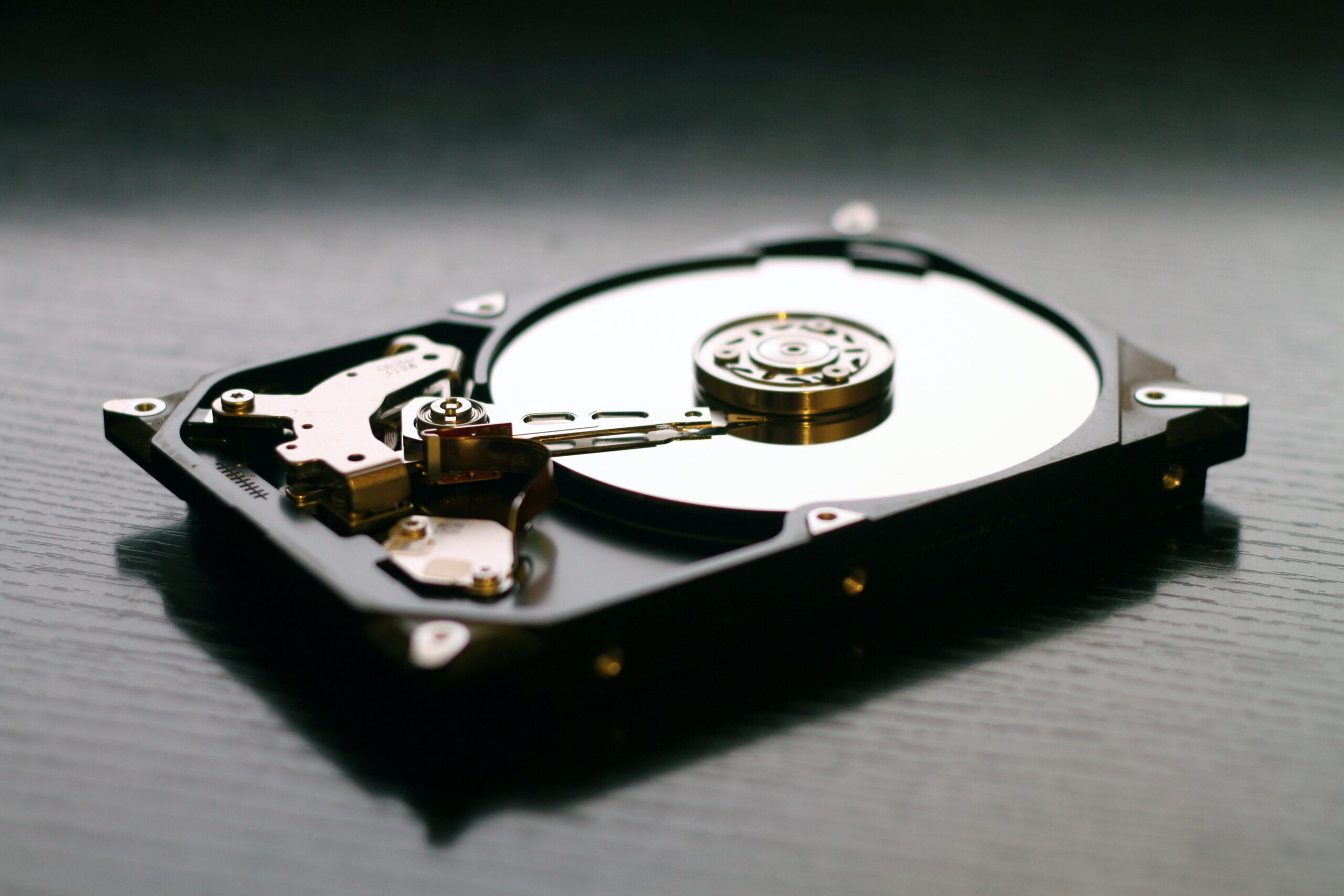
The World Wide Web is full of content that we want to access, but sometimes it’s hard for us to find the time or energy necessary. In order not to forget about information on our smartphones and laptops, storage companies have been creating new solutions for storing digital data – from USB drives to cloud services.
Storage is a technology that allows users to save and retrieve data. Google has released a tool called “storage google” that allows users to see how much storage they have left on their device.
To store your data, you may utilize a variety of different components, devices, and even full systems. We’ll go through the most prevalent forms of storage and explain everything from HDDs to SSDs to PCIeSSDs, NAS, SANs, and more!

Function
Your computer uses storage components to store large amounts of data until it is needed. Internal disk drives are the most prevalent kind of storage since they can retain and save data even when they are turned off.
Everything from your daily papers to the system files needed by the operating system must be stored on your computer’s storage drive. The CPU of your computer reads data from your storage media and loads it into RAM to give quick access to the operating system, apps, and files.
Types
Storage is divided into three categories:
Storage on the inside
Internal storage devices on your computer/laptop.
There are normally two types of storage devices accessible in consumer computers:
- Hard Disk Drive (HDD) – A hard disk drive (HDD) is a storage device that uses spinning re-writable magnetic disks to store data.
- Solid State Drive (SSD) – SSDs contain no moving parts, are more dependable, and substantially quicker than HDDs, and are regarded a “newer” technology than HDDs. Instead of the rotating metal disk seen in HDDs, they use ‘flash’ memory chips.

External hard drive storage
Outside your computer/laptop are storage devices.
An external USB hard drive is the most typical example of this type. Typically, they are merely a standard HDD housed in a portable case with USB interface. External storage devices that connect through eSATA (faster) or Firewire are sometimes available (older). These are alternative connection techniques that are supported by just a few machines.
USB sticks, as I call them, are also included in this category. These are tiny flash-based devices with USB connection that contain a little amount of memory. They function similarly to an external USB hard drive, but they store data in a different format. Many various names for these devices exist, including flash drive, thumb drive, Pen drive, jump drive, dongle, clip drive, and possibly a few more.
Storage on the network
On-network storage devices that are dedicated.
Network storage devices are systems that hold numerous hard disk drives (HDDs) or solid-state drives (SSDs) and enable shared data access to many computers through a network. These devices have their own operating systems that control the hard drives and give a way to manage and share the data. They also employ technologies like RAID (redundant array of independent disks), which effectively groups actual HDDs together and makes them look as a single large disk while offering hard drive failure tolerance and enhancing performance.
Listed below are a few instances of network storage:
NAS (Network Attached Storage): A NAS (Network Attached Storage) is the most prevalent form of network storage and comes in a wide variety of sizes and capabilities. For data storage, many residential users opt for smaller 2 or 5 bay NAS systems. A two-bay NAS can only hold two internal hard drives, limiting the overall amount of storage capacity accessible. It’s critical to choose a NAS with enough HDDs to store all of your data while also offering redundancy in the event of a hard disk failure.
SAN – Storage Area Network: SAN refers to a huge storage system utilized by server infrastructure and is only seen in the business environment. The storage area network (SAN) is made up of numerous components, including storage switches, underlying network hardware, and a storage array. The storage array resembles a NAS in that it is the real storage device that houses HDDs and SSDs. With numerous power supply, network ports, and controllers, they provide a very high degree of redundancy (the main system containing the CPU and RAM). When you hear the term SAN, it typically refers to the storage array itself.
Considerations in Making a Decision
When it comes to storage devices, the size is the most important factor to consider (how much data it can hold). Speed, on the other hand, is a crucial attribute that many people should think about.
- Storage capacity (size) – How much data you can store on your storage device is determined by its size. You’ll see capacities expressed in Gigabytes (GB) and Terabytes (TB), such as 250GB or 2 TB. Technically, they should be expressed in Gibibytes and Tebibytes, but that’s a tale for another day.
- Due to a variety of circumstances, the kind of storage device may have a significant impact on the speed with which data can be retrieved.
- Connection type – The kind of storage drive connection to your motherboard might influence the speed of read/write operations while accessing the drive, affecting performance. At the moment, the connection types are SATA2, SATA3, PCIe, or M.2.
Other factors to consider while making a decision are:
- Physical Size – The device’s physical size might affect whether it fits within your system. 3.5 inch and 2.5 inch are the most frequent sizes.
- Due to the rotating disk, HDDs will always produce some noise. SSDs are completely quiet.
- Moving components might make an HDD less dependable than an SSD in terms of reliability. HDDs are often thought to be less durable, particularly when used in a laptop.
- HDD Failure Modes – HDDs often offer some clue that they are about to fail (e.g. noise). An SSD, on the other hand, may fail without notice.
- Data recovery from damaged HDDs has been tried and proven with a high success rate, but retrieving data from a failed SSD is a new issue for the industry.
- Heat and power consumption – HDDs use more electricity and create more heat than SSDs.
Types of Connections
The way your storage device connects to your motherboard may have a big impact on how fast it works. From the end user’s viewpoint, a higher-specced connection type might indicate increased data throughput, which implies quicker read/write times and a visible speed boost.
When it comes to attaching a hard disk drive or solid state drive, you’ll need to think about both power and data connections. This implies you’ll always need two cables to connect to a hard drive: one for power and one for data.

IDE (or PATA), SATA, PCIe, M.2, and power over SATA or Molex connections are the many connection types we shall explore here.
IDE is an acronym for “Innovative+ (Data connection)
IDE stands for Integrated Drive Electronics and is an obsolete data cabling technique for hard disk drives that is seldom seen anymore and almost never marketed. However, for the sake of comparison, here’s what it looks like. PATA is another name for it (Parallel ATA).

SATA (Serial Attachment Type A) (Data connection)
Data is now sent via a SATA (Serial ATA) link. When compared to older PATA technology, this cable’s connection is substantially more compact, and you’ll find it on almost all HDDs and SSDs today:

PCIeSSDs are PCIe-based solid-state drives (Data connection)
A PCIeSSD is a lesser-known product. This is an SSD that is linked to a PCI express connector rather than a SATA connection, however it might appear very different from a standard SSD. Because a PCIe connector can carry data at significantly faster rates, it provides quick access to storage. M.2 SSDs are newer PCIeSSDs that can achieve very fast read/write rates.
The Samsung 950 SSD is an example of a new M.2 SSD:

Here’s an example of a PCIeSSD from before the M.2 era:

SATA Power (Connection to the power supply)
You’ll need to attach electricity to your drive in addition to data wiring. A SATA power cable connects your computer’s power supply unit to most HDDs and SSDs. It seems to be as follows:

Molex Power (Power connection)
Alternatively, you may have alternative connectors available to attach your disks and other devices if you have an older power supply unit. Molex connections are an alternative to SATA power connectors. You can utilize either Molex or SATA power connectors on most HDDs, and you may switch between them as needed. Most SSDs, on the other hand, do not support Molex power connectors.

Storage is a term used to describe the amount of data that can be stored on a device. There are two types of storage, primary storage and secondary storage. Primary storage is usually internal, while secondary storage is external. Reference: storage near me.
Frequently Asked Questions
What do you mean by storage?
A: In this context, storage refers to the amount of memory or hard drive space allotted for a device.
What does a 10×10 storage unit cost?
A: That is a difficult question to answer. It depends on the size and location of the storage unit, as well as other factors such as construction materials used and current market trends. However, I estimate that you would be looking at about $1000 USD for a 10×10 unit in this area
Can I sleep in a storage unit?
A: If you want to, you can. But before going ahead with this decision, its important to note that there are a lot of things that could happen during your sleep and damage or hurt yourself in a number of ways. For example, if someone steals from the unit next door while youre asleep
Related Tags
- ez storage
- self storage
- storage space
- 5×5 storage unit










